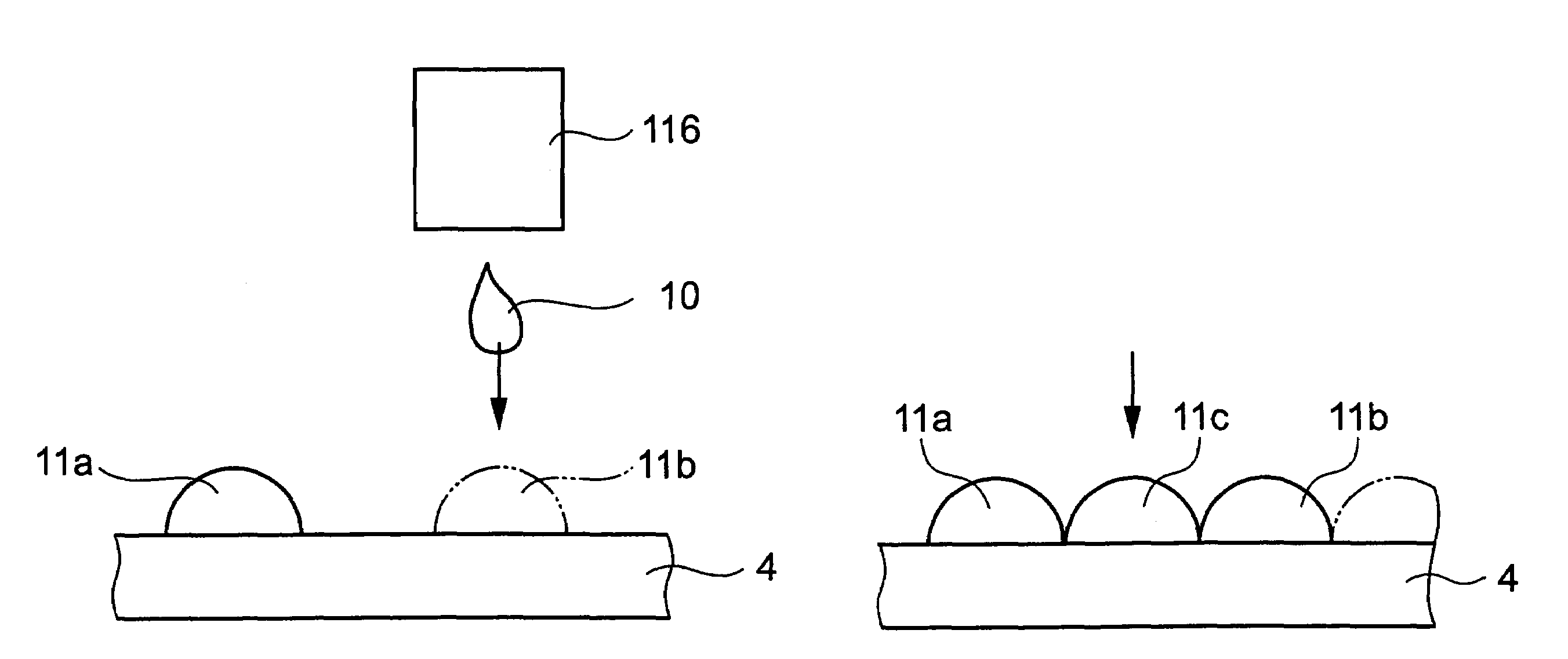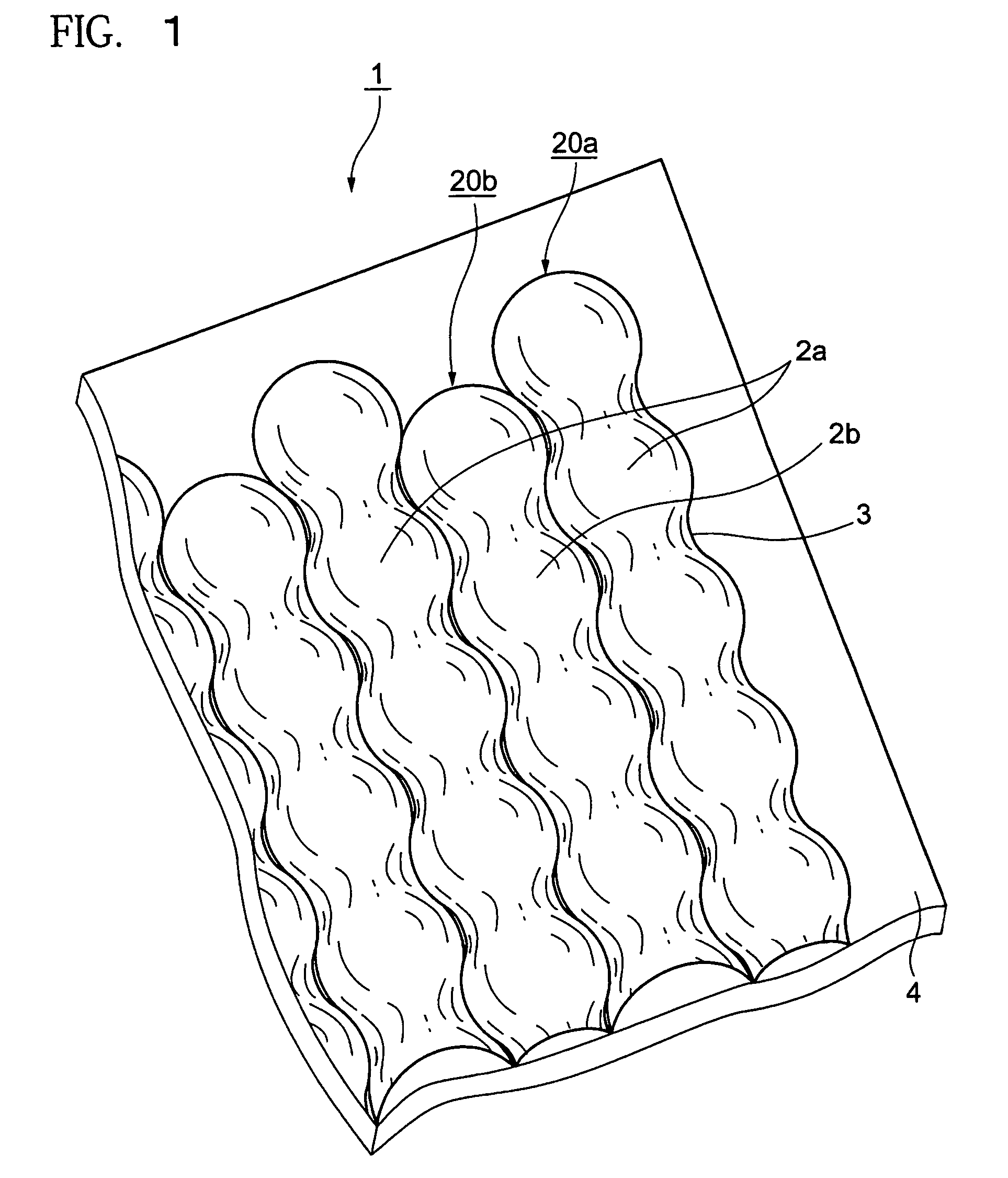Method of manufacturing microlens, microlens, optical film, screen for projection, and projector system
a manufacturing method and technology for microlens, applied in the field of manufacturing microlens, microlens, optical films, screens for projection and projector systems, can solve the problems of high cost of manufacturing lenses adaptable to screens for large-scale, difficult machine and facility scale-up, and cost reduction, etc., to achieve flexible manufacturing and reduce cost
- Summary
- Abstract
- Description
- Claims
- Application Information
AI Technical Summary
Benefits of technology
Problems solved by technology
Method used
Image
Examples
Embodiment Construction
[0037]A manufacturing method of a microlens according to exemplary embodiments of the present invention is described with reference to the attached drawings.
[0038]At first, as an example of the microlens being used effectively, a screen for projection used in a projector system is schematically described. As shown in FIG. 7, a projector system 70 includes a projector 71 and a screen 30 for projection (hereinafter, referred to as screen), and the projector 71 includes a light source 72 such as mercury lamp, a lens group 75 to guide light from the light source 72 to a liquid crystal light bulb including a liquid crystal panel, the liquid crystal light bulb (light modulating device) 73 modulating light passing through the liquid crystal panel and sending out the light as an image to be projected, and an imaging lens (imaging optical system) 74 imaging the image of light passed through the liquid crystal light bulb 73 on to the screen 30. In the projector system 70 of such a structure, ...
PUM
| Property | Measurement | Unit |
|---|---|---|
| diameter | aaaaa | aaaaa |
| volume | aaaaa | aaaaa |
| volume | aaaaa | aaaaa |
Abstract
Description
Claims
Application Information
 Login to View More
Login to View More - R&D
- Intellectual Property
- Life Sciences
- Materials
- Tech Scout
- Unparalleled Data Quality
- Higher Quality Content
- 60% Fewer Hallucinations
Browse by: Latest US Patents, China's latest patents, Technical Efficacy Thesaurus, Application Domain, Technology Topic, Popular Technical Reports.
© 2025 PatSnap. All rights reserved.Legal|Privacy policy|Modern Slavery Act Transparency Statement|Sitemap|About US| Contact US: help@patsnap.com



